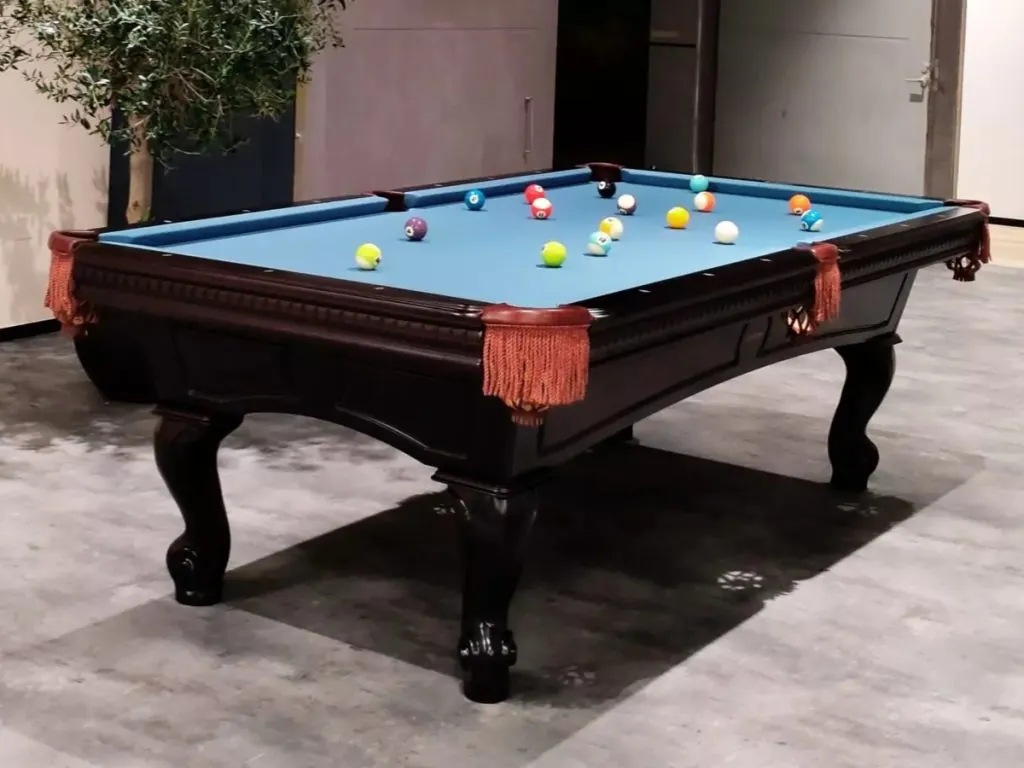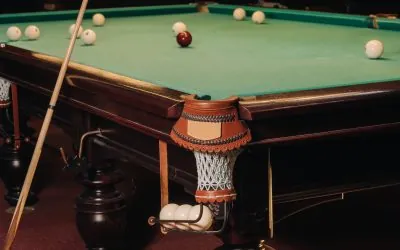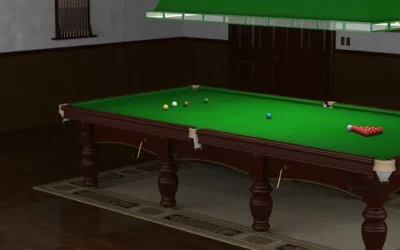
A well-maintained billiard table is essential for both casual players and serious enthusiasts. Over time, however, even the best tables can show signs of wear and tear. From torn cloth and sagging cushions to uneven slate, aging billiard tables require attention to ensure optimal gameplay. Regular maintenance and timely restoration can extend the life of your billiard table, enhance your playing experience, and preserve the table’s value. This guide will walk you through the common issues that can arise with an aging billiard table and provide detailed instructions on how to restore it to its former glory.
Assessing the Condition of Your Billiard Table
Identifying Signs of Wear and Damage
The first step in billiard table recovery is to thoroughly assess its condition. Look for obvious signs of wear such as tears or burns in the cloth, chipped or cracked slate, worn-out cushions, and damaged pockets. Additionally, check for any wobbly or loose components which could affect the stability and performance of the table. Uneven playing surfaces, noisy rebounds, and visually apparent damage are all indicators that your table needs attention.
Determining the Extent of Restoration Needed
Once you’ve identified the issues, determine the extent of the restoration needed. Minor repairs might include patching small tears or tightening loose bolts. Full restoration, on the other hand, may require replacing the cloth, cushions, and even the slate. Assess whether you can handle the repairs yourself or if professional help is necessary.
Minor Repairs
For minor issues like small tears in the cloth or loose bolts, you can often handle the repairs yourself with some basic tools and materials. These quick fixes can prevent further damage and keep your table in playable condition. For example, small cloth tears can be patched using a billiard cloth repair kit, and loose bolts can be tightened with a wrench.
Full Restoration
A full restoration is a more involved process that can significantly improve the performance and aesthetics of your billiard table. This might include replacing the cloth, re-leveling the slate, replacing the cushions, and repairing or replacing the pockets. Full restoration can be time-consuming and may require specialized tools and expertise.
Our Billiards Collection:
Gathering Necessary Tools and Materials
Essential Tools
Before starting the restoration, gather the essential tools you will need:
- Screwdrivers and wrenches: For disassembling and reassembling the table parts.
- Staple gun and staples: For attaching the new cloth to the slate.
Materials Needed
The materials required for a full billiard table recovery include:
- New billiard cloth: Choose high-quality cloth for durability and better play.
- Replacement cushions: Essential for restoring the rebound and responsiveness of the table.
- Slate filler (if needed): For repairing minor cracks or chips in the slate.
- New pockets: Replace old or damaged pockets to ensure smooth play.
- Cleaning supplies: For preparing the table surfaces before and after restoration.
Step-by-Step Guide to Restoring a Billiard Table
1. Disassembling the Table
Begin by carefully disassembling the table. Remove the rails, pockets, and the old cloth. Take note of how everything fits together for easier reassembly later. Photographing each step can be very helpful for reference during reassembly. Carefully store all screws and bolts in labeled containers to avoid losing any parts.
2. Repairing and Leveling the Slate
Check the slate for any cracks or chips. If minor damage is found, use slate filler to repair it. Once repaired, level the slate using a carpenter’s level. Proper leveling is crucial for consistent gameplay. Adjust the legs or use shims to ensure the slate is perfectly level. An uneven slate can cause balls to roll unpredictably, ruining the playing experience.
3. Replacing the Cushions
Old or worn-out cushions can significantly affect ball rebound. Remove the old cushions and clean the rail surfaces. Apply new cushions using carpenter’s glue, ensuring they are securely attached and aligned correctly. Allow sufficient time for the glue to dry completely before proceeding to the next step.
4. Replacing the Cloth
Cut the new cloth to fit your table. Start by attaching it to the slate bed, pulling it tight and smoothing out any wrinkles. Use a staple gun to secure the cloth underneath the slate, ensuring a smooth, even surface. Begin stapling from the center and work your way outwards to ensure even tension. Trim any excess cloth with a utility knife.
5. Repairing or Replacing Pockets
Examine the pockets for any signs of damage. If they are worn or broken, replace them with new ones. Ensure they are securely fastened to the table frame. If the pockets are still in good condition, you can clean and refurbish them to match the restored table.
6. Reassembling the Table
Reattach the rails and pockets carefully, making sure everything fits tightly and is properly aligned. Double-check that all parts are securely fastened to prevent any movement during play. Use your photos and notes from the disassembly process to ensure everything is reassembled correctly.
7. Finishing Touches
Once the table is reassembled, give it a final check to ensure everything is in place and securely fastened. Adjust any loose components and perform a final clean-up to remove any dust or debris. Test the table by playing a few practice shots to ensure it is functioning correctly and to make any necessary adjustments.
Maintaining Your Restored Billiard Table
To keep your billiard table in top condition, regular maintenance is essential. Dust the cloth and slate regularly to prevent build-up and use billiard table covers when table not in use to protect it from dust and spills. Periodically check for loose bolts or minor wear and address these issues promptly to avoid larger problems. Regularly brushing the cloth with a billiard brush and using a damp cloth to clean the balls can help maintain the table’s pristine condition.
Common Mistakes to Avoid
1. Rushing the Restoration Process
Take your time during the restoration process. Rushing can lead to mistakes and poor-quality repairs that may need to be redone. Allow adequate time for each step, especially when waiting for adhesives to set or paint to dry.
2. Using Low-Quality Materials
Investing in high-quality materials is crucial for a successful billiard table recovery. Cheap materials can wear out quickly and negatively impact gameplay. High-quality cloth and cushions will ensure a better playing experience and longer-lasting results.
3. Improper Leveling of the Slate
Ensuring the slate is perfectly level is essential. An uneven slate can cause balls to roll unpredictably, ruining the playing experience. Take your time to level the slate accurately, checking multiple points across the surface.
4. Not Securing the Cloth Tightly
The cloth must be stretched tightly and evenly across the slate. Loose cloth can wrinkle and affect ball movement, leading to a frustrating game. Make sure the cloth is smooth and taut before securing it with staples.
Conclusion
Restoring a billiard table can be a rewarding project that significantly enhances your playing experience and extends the table’s lifespan. By carefully assessing the condition of your table, gathering the necessary tools and materials, and following a step-by-step restoration process, you can bring new life to your billiard table. Remember, taking the time and effort to do the job right will pay off with smoother gameplay and a table that looks as good as new. So, grab your tools and get started on your billiard table recovery today! Enjoy the satisfaction of restoring your billiard table and the enhanced gameplay it will bring.

